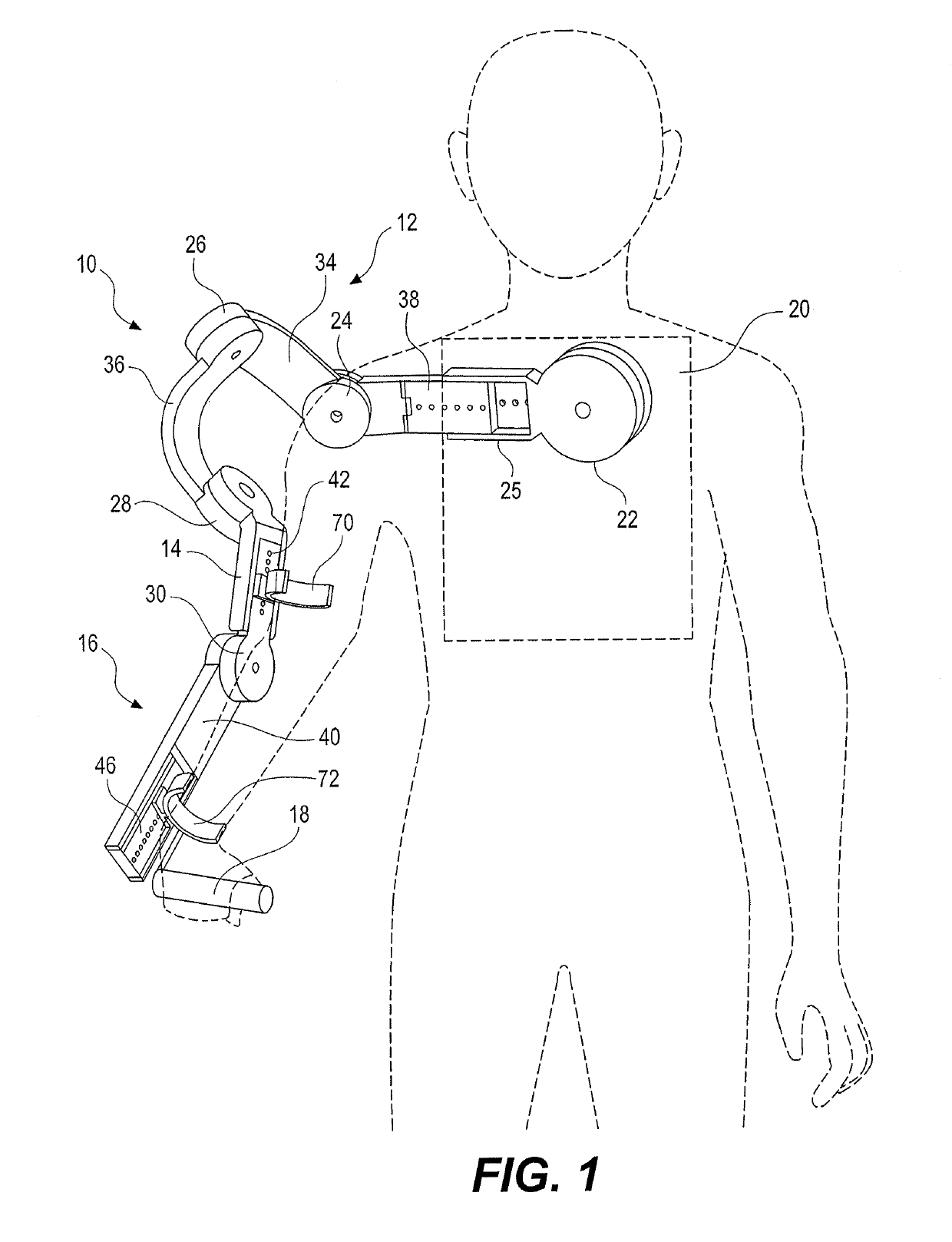Robotic upper limb rehabilitation device
a robotic upper limb and rehabilitation technology, applied in the field of robotic upper limb rehabilitation devices, can solve the problems of limiting the number of available professional staff, preventing the implementation of high intensity and long therapy sessions for stroke patients, and current manual therapy techniques are not sufficient to address this growing need
- Summary
- Abstract
- Description
- Claims
- Application Information
AI Technical Summary
Benefits of technology
Problems solved by technology
Method used
Image
Examples
Embodiment Construction
[0015]The robotic upper limb rehabilitation device (RULRD) 10 is an articulated exoskeleton adapted for attachment to an upper limb of a human patient. As best shown in FIG. 1, the upper limb rehabilitation device 10 includes an articulated shoulder assembly 12, an upper arm member 14 pivotally attached to the shoulder assembly 12, a forearm assembly 16 pivotally attached to the upper arm member 14, and an inflatable hand grip 18 pivotally attached to the forearm assembly 16. The robotic upper limb rehabilitation device 10 assists in rehabilitation of an upper limb of a human patient recovering from a stroke or the like. The articulated shoulder assembly 12 has five degrees of freedom, including at least two degrees of freedom simulating inner shoulder movement. Overall, the robotic upper limb rehabilitation device 10 has eight degrees of freedom, supporting the motion of the shoulder girdle, the glenohumeral (GH) joint, the elbow and the wrist. Out of the eight degrees of freedom, ...
PUM
 Login to View More
Login to View More Abstract
Description
Claims
Application Information
 Login to View More
Login to View More - R&D
- Intellectual Property
- Life Sciences
- Materials
- Tech Scout
- Unparalleled Data Quality
- Higher Quality Content
- 60% Fewer Hallucinations
Browse by: Latest US Patents, China's latest patents, Technical Efficacy Thesaurus, Application Domain, Technology Topic, Popular Technical Reports.
© 2025 PatSnap. All rights reserved.Legal|Privacy policy|Modern Slavery Act Transparency Statement|Sitemap|About US| Contact US: help@patsnap.com



